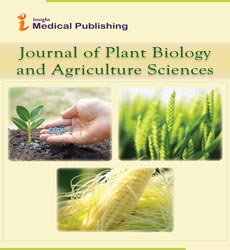How is Bioluminescence employed By Humans & in Nature?
Abstract
The synthesis and emission of light by living organisms, known as Bioluminescence, constituted a stumbling block for Darwin. He couldn't figure out why this phenomenon arose in different animals at seemingly random intervals. However, we now know that bioluminescence has evolved at least 40 times on land and in the sea separately [1].
Bioluminescence was not discovered by Darwin.Around 350 BC, Greek philosopher Aristotle noted that bioluminescence is a sort of "cool" light that does not emit heat. Researchers have discovered that this type of chemiluminescence creates bluegreen light as a result of an enzyme called luciferase oxidizing a molecule called luciferin (the "lightbringer").More than 75% of deep-sea animals are thought to be able to generate their own light. Bioluminescent lures, like fishing rods, are used by anglerfish to entice prey to their enormous mouths. Surprisingly, Photo bacterium, a bacterium that lives in symbiosis with the anglerfish inside its esca, produces the anglerfish's light (lure) [2].
Humans have discovered innovative ways to use bioluminescence to their advantage throughout history. Tribes have utilized glowing mushrooms to light their way through impenetrable jungles, for example, while miners have utilized fireflies as an early safety lamp. Researchers are turning to bioluminescence as a potential source of green energy again, maybe motivated by these applications. Our typical street lamps may be replaced by lighting trees and structures in the nottoo-distant future. Aliivibrio fisheri bioluminescence is being utilized to evaluate water toxicity. When exposed to contaminants, the bacterial culture's light output diminishes, signaling the presence of a contaminant. Bioluminescence has even been used in combat. In November 1918, bioluminescent organisms assisted in the sinking of the final German U-boat during World War One. The submarine is said to have passed through a bioluminescent bloom, leaving a luminous trail that the allies were able to track. It has also served as a safeguard. The wounds of some of the injured troops began to glow after one of the bloodiest battles of the American Civil War, at Shiloh. The occurrence became known as "Angel's Glow," since the luminous wounds healed more swiftly and cleanly. Photorhabdus luminescent, a soil-dwelling bacterium that emits antimicrobial c, was most likely responsible for the glow [3].
The medicinal applications [4] of bioluminescence have perhaps sparked the most interest. Green fluorescent protein was given the Nobel Prize in Chemistry in 2008 for its discovery and development (GFP). Unlike the bioluminescence mechanism described so far, GFP is found naturally in the crystal jellyfish Aquaria Victoria, which is fluorescent
Open Access Journals
- Aquaculture & Veterinary Science
- Chemistry & Chemical Sciences
- Clinical Sciences
- Engineering
- General Science
- Genetics & Molecular Biology
- Health Care & Nursing
- Immunology & Microbiology
- Materials Science
- Mathematics & Physics
- Medical Sciences
- Neurology & Psychiatry
- Oncology & Cancer Science
- Pharmaceutical Sciences
